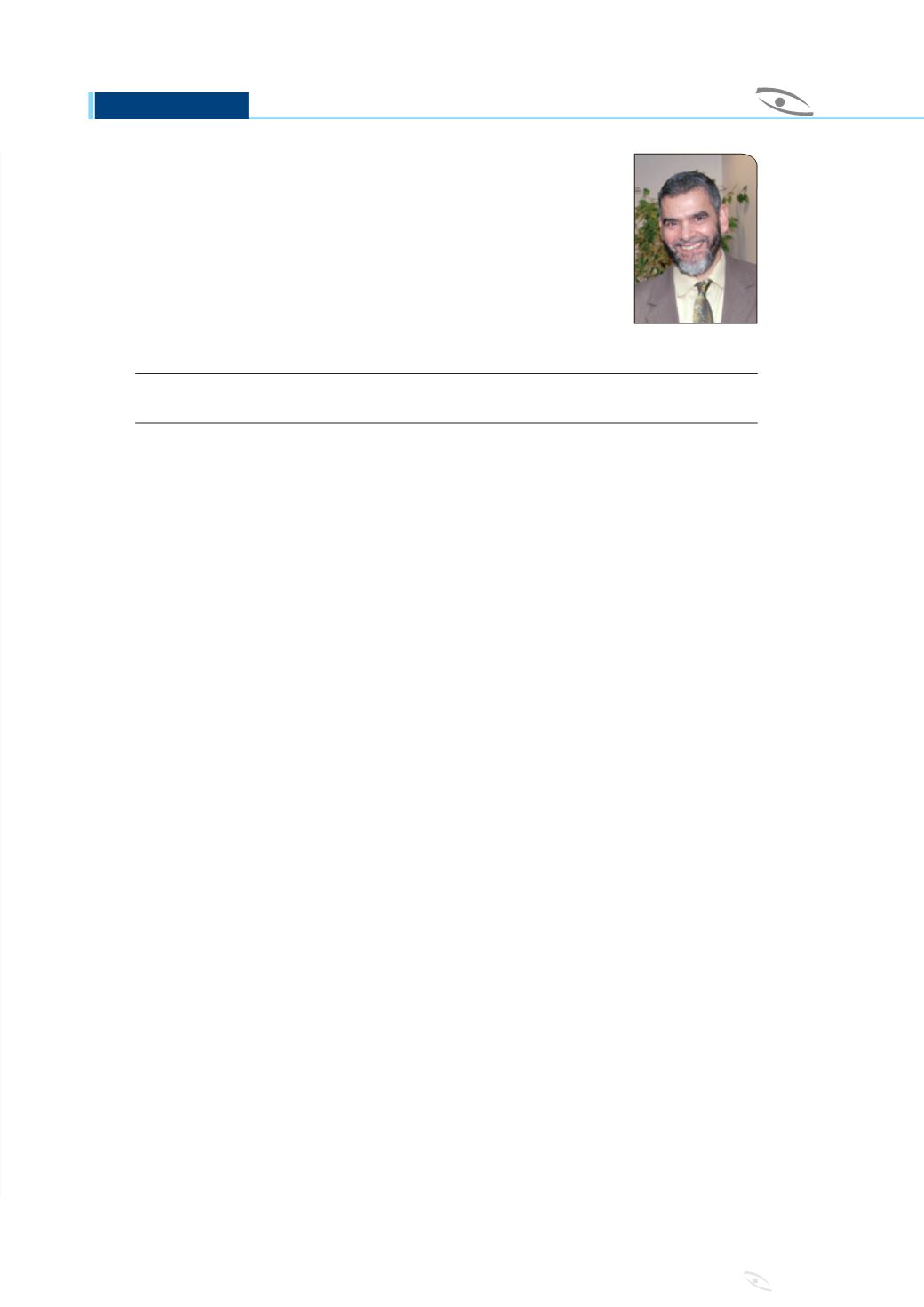
55
magazine
ALRAQABA
Issue Book
A
l-Raqaba magazine is keen on familiarizing the reader
with the latest scientific issues related to the financial,
accounting and economic perception and other areas con-
cerning the work of our supreme audit institutions, with the
aim of enriching the intelligence and developing the capabili-
ties. This is to be achieved by presenting the ideas and in-
formation of these publications, as it demonstrates the suc-
cessive and rapid developments in our societies and at the
regional and international levels.
By: Mr. Abdel Moneim Ghareeb
Expert, President Office
Corporate Governance
Introduction to Financial Analysis &
Performance Evaluation
The article is intended to review the book en-
titled : "Corporate Governance: an introduction
to financial analysis and performance evalua-
tion " by Prof. Dr. Mounir Ibrahim Hindi, Pro-
fessor of Financial Management & Financial
Institutions, Faculty of Commerce, Tanta Uni-
versity, 2016 edition . The book is composed
of approximately 500 pages and published by
Modern Arabic office, Alexandria – Egypt.
The book included five sections, the first one
contained four chapters I to IV that addressed
the concept of corporate governance and its
tools within the dominant cultures of financial
management. Then, section two, "traditional
financial analysis within the framework of gov-
ernance", which included three chapters V-VII,
mostly represented the development of tradi-
tional financial analysis in a manner that would
partially meet the requirements of corporate
governance. The third section, "traditional fi-
nancial analysis: problems and solutions",
explained the problems of traditional financial
analysis, the solutions proposed to overcome
them and how to address such problems,
which was covered in chapter VIII, titled "prob-
lems of traditional financial analysis". Chapter
IX presented the topic of "financial analysis
under inflation". Chapter X is titled" calculating
ratios: problems and solutions", followed by
section IV, which presented two updated mod-
els of financial analysis, the diagnostic model
featured in chapter XI, and the introduction of
the economic added value addressed in chap-
ter XII.
The conclusion of the book was featured in
section V under the title of: "Future Financial
Analysis", where the future financial analysis
was presented in three chapters, chapter XIII
dealt with the traditional financial analysis on
the basis of future financial statements, and in
chapter XIV the future financial analysis was
addressed using the updated models.
The author explained that it was typical to
take advantage of the future financial analysis,
through using it in estimating the fair value of
the share, considering that maximizing that
value is a requirement sought by the corporate
governance constitution, as it is closely linked
to capitalizing the wealth of the owners, which
is featured in chapter LXX. The appendices
came last including a glossary, the most im-
portant terms in the book, the composite inter-
est tables, and the present value tables.
The significant features of the book shall be
presented within its chapters, and according
the pages allocated for publication.


